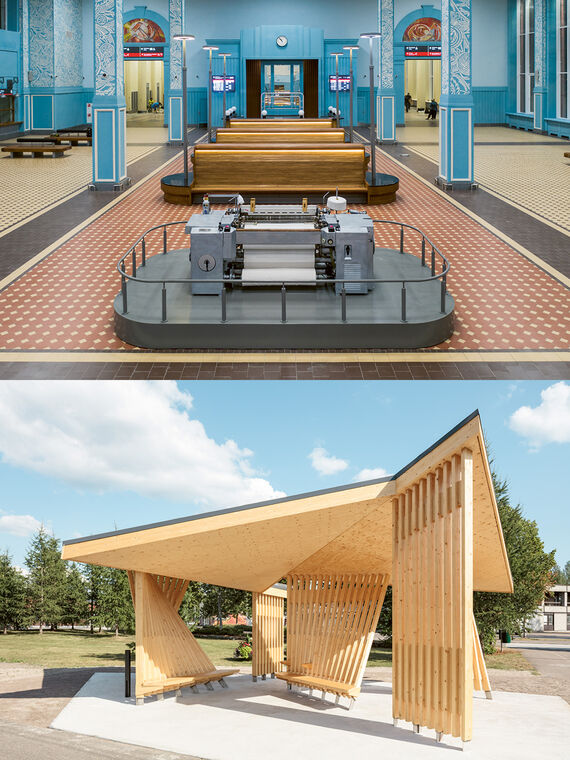In the 1830s, trains took over Britain. Life on the road, once characterized by seedy inns, mud-filled streets, and rusty carriages, became comfortingly predictable. The revolution had a name: the steam engine. The Stockton & Darlington Railway was the first to open, amid much fanfare, followed by Leeds’s Middleton Railway and the Liverpool and Manchester Railway. These openings were not just about travel. The new routes fueled Britain’s industrialization and the social revolution that came with it.
Workers could now commute to cities, and urban centers flourished. Peasants who had vigilantly tended land for centuries found jobs at Bradford’s wool factories. Vacationers traveled by railway, soldiers too, which meant restaurants and hotels sprang up across the quiet British coast. Whereas waking hours were once determined by the light of sunrise and the waning sunset, people soon marked time by rail-station schedules instead.
Rapidly adopted worldwide, trains came to dominate life through the 1800s and well into the 20th century. Then, in the 1950s, they met their match—the automobile. In 1963, New York City’s once majestic Penn Station, adorned with colonnades inspired by ancient Roman architecture, was bulldozed and relocated underground. Ten years later, Birmingham New Street, a major railway hub in England, was demolished to make way for a parking garage. Manhattan’s Grand Central Terminal just narrowly escaped the wrecking ball. By the year 2000, only 500 Amtrak stops remained of America’s nearly 40,000 railway stations. Abandoned lines still dot the countryside, ghosts of travel past.
As we glide further into the 21st century, trains are making a comeback. Subway systems worldwide are becoming increasingly sophisticated—London’s Underground now serves 272 stations and extends well beyond the city limits—and new systems are coming to Washington, D.C.; São Paulo; and Prague. Britain’s market towns are struggling to get their branch lines back and are welcoming lighter trains, such as the Parry People Mover. In Vienna, stations vary from 1970s modernist buildings to relics of Art Nouveau. Gucci is using trains in their campaigns, while the beau monde is fighting to secure beds on Belmond’s Venice Simplon-Orient-Express.
A new book by the travel journalist Christopher Beanland, Station: A Journey Through 20th and 21st Century Railway Architecture and Design, celebrates the second golden age of train travel by touring 50 of the world’s most impressive stations, signal boxes, railway hotels, and interchanges—including St. Pancras, in London; the modernist Kohta Train Station, in Finland; and the new Line 9 stations, in Chengdu. “Train passengers read books, daydream, eat long lunches,” Beanland writes. “Car passengers listen to music and fidget. Railways tug at heartstrings.” —Elena Clavarino
Elena Clavarino is a Senior Editor at AIR MAIL




